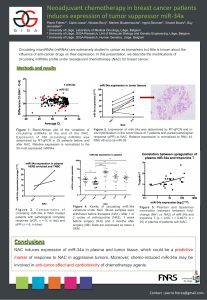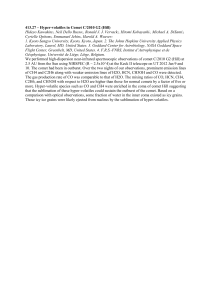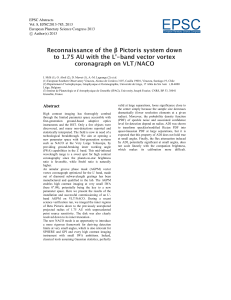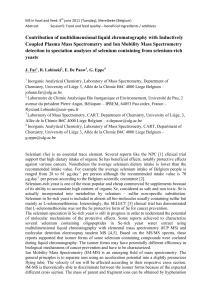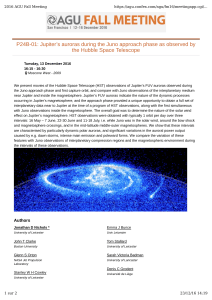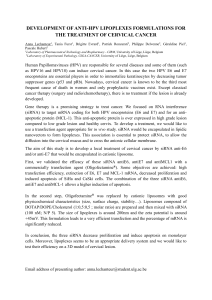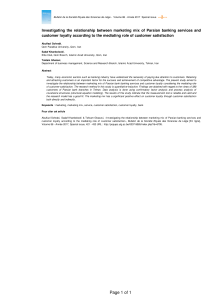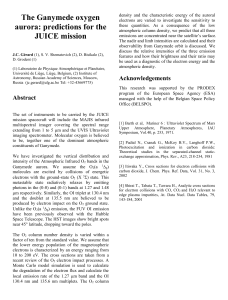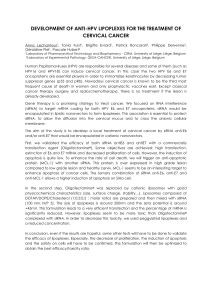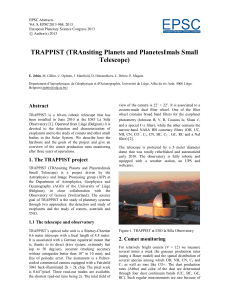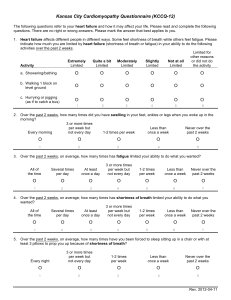GC×GC-(HR)TOFMS in Cancer Research
publicité
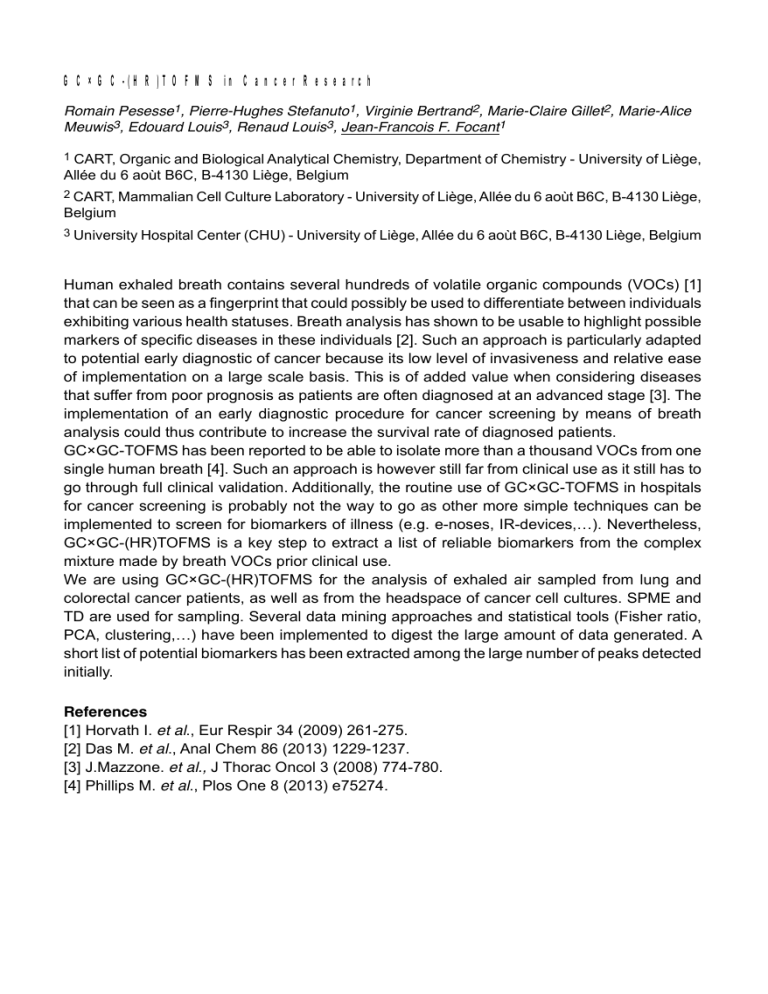
GC×GC-(HR)TOFMS in Cancer Research Romain Pesesse1, Pierre-Hughes Stefanuto1, Virginie Bertrand2, Marie-Claire Gillet2, Marie-Alice Meuwis3, Edouard Louis3, Renaud Louis3, Jean-Francois F. Focant1 1 CART, Organic and Biological Analytical Chemistry, Department of Chemistry - University of Liège, Allée du 6 aoùt B6C, B-4130 Liège, Belgium 2 CART, Mammalian Cell Culture Laboratory - University of Liège, Allée du 6 aoùt B6C, B-4130 Liège, Belgium 3 University Hospital Center (CHU) - University of Liège, Allée du 6 aoùt B6C, B-4130 Liège, Belgium Human exhaled breath contains several hundreds of volatile organic compounds (VOCs) [1] that can be seen as a fingerprint that could possibly be used to differentiate between individuals exhibiting various health statuses. Breath analysis has shown to be usable to highlight possible markers of specific diseases in these individuals [2]. Such an approach is particularly adapted to potential early diagnostic of cancer because its low level of invasiveness and relative ease of implementation on a large scale basis. This is of added value when considering diseases that suffer from poor prognosis as patients are often diagnosed at an advanced stage [3]. The implementation of an early diagnostic procedure for cancer screening by means of breath analysis could thus contribute to increase the survival rate of diagnosed patients. GC×GC-TOFMS has been reported to be able to isolate more than a thousand VOCs from one single human breath [4]. Such an approach is however still far from clinical use as it still has to go through full clinical validation. Additionally, the routine use of GC×GC-TOFMS in hospitals for cancer screening is probably not the way to go as other more simple techniques can be implemented to screen for biomarkers of illness (e.g. e-noses, IR-devices,…). Nevertheless, GC×GC-(HR)TOFMS is a key step to extract a list of reliable biomarkers from the complex mixture made by breath VOCs prior clinical use. We are using GC×GC-(HR)TOFMS for the analysis of exhaled air sampled from lung and colorectal cancer patients, as well as from the headspace of cancer cell cultures. SPME and TD are used for sampling. Several data mining approaches and statistical tools (Fisher ratio, PCA, clustering,…) have been implemented to digest the large amount of data generated. A short list of potential biomarkers has been extracted among the large number of peaks detected initially. References [1] Horvath I. et al., Eur Respir 34 (2009) 261-275. [2] Das M. et al., Anal Chem 86 (2013) 1229-1237. [3] J.Mazzone. et al., J Thorac Oncol 3 (2008) 774-780. [4] Phillips M. et al., Plos One 8 (2013) e75274.

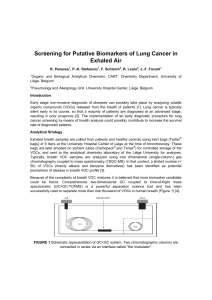

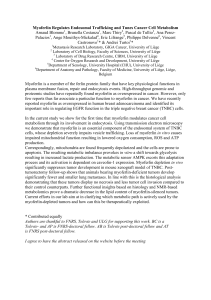


![O13 B. COSTANZA (1), A. BLOMME (1), E. MUTIJIMA (2), P. DELVENNE (3), O. DETRY (4), V. CASTRONOVO (1), A. TURTOI (1) / [1] University of Liege, Liège, Belgium,](http://s1.studylibfr.com/store/data/009119514_1-fb77bfa67407011ffd88149f49e1b542-300x300.png)
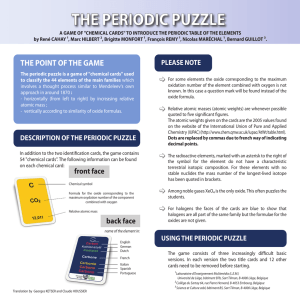
![O13 B. COSTANZA (1), A. BLOMME (1), E. MUTIJIMA (2), P. DELVENNE (3), O. DETRY (4), V. CASTRONOVO (1), A. TURTOI (1) / [1] University of Liege, Liège, Belgium,](http://s1.studylibfr.com/store/data/009119491_1-3a3e066bcef2a5056e63f53d11e45bbd-300x300.png)
